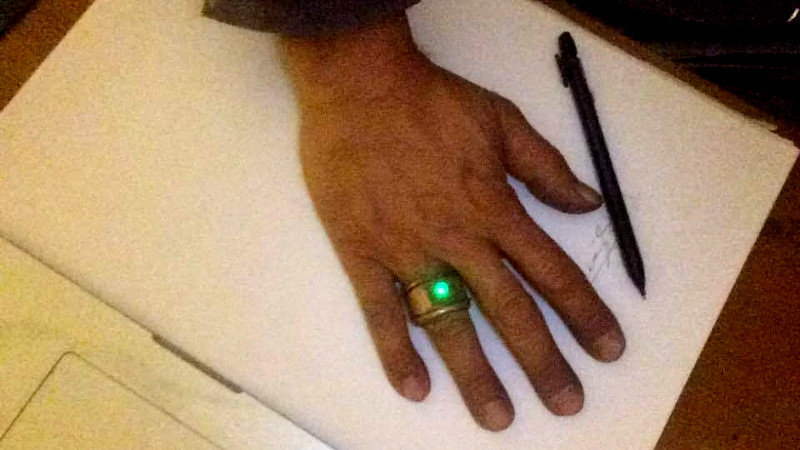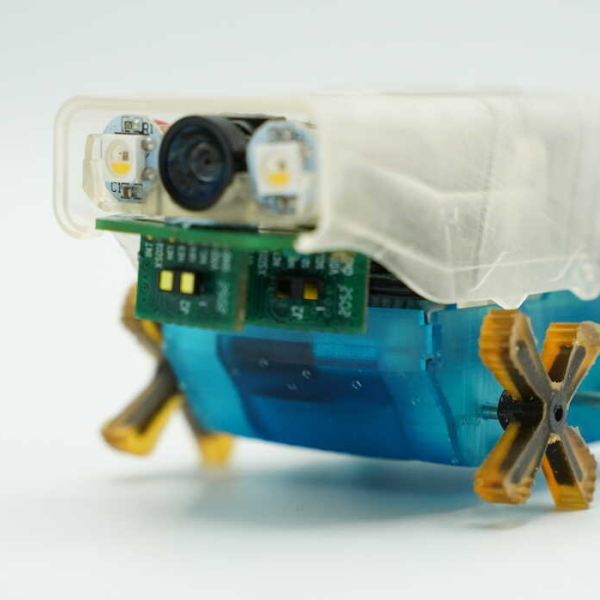LED jewelry has always been a popular part of the maker community. Oftentimes, coin cells are used as a compact source of power, or wires are run to discreet hidden battery packs. [OguzC3] went another route, however, creating a glowing ring which works as its own battery.
The design will be familiar to those who have done high-school experiments on basic batteries. An aluminium pipe forms the inner surface of the ring, which is then wrapped in a layer of newspaper. A copper outer ring is then placed outside. When soaked in a salt water solution, this forms a basic battery. The voltage output is only around 0.5 volts, so a joule thief circuit is built into the ring to step this up high enough to drive an LED. [OguzC3] reports that the ring lasts several hours at a time, and only needs a quick rinse in fresh salty water to recharge.
It’s a creative concept, and the final piece looks like a magical object from the world of fantasy. It would make a great addition to any cosplay, and we’re sure the technique could be adapted to other accoutrements, too. A similar experiment done in a more extreme way is this electric car charged via lemons. If you’ve got your own battery chemistry project cooking up at home, be sure to let us know!

















Super clever
But this still is a battery, at some point the copper or aluminium with react enough and block power.
Use nickel, iron and make it rechargeable!
I think the major issue at the moment is not so much that it takes a few hours to run out of ions, but out of moisture. I’d expect it to go a few days otherwise.
That’s the interesting bit – how long does the ring last?
It isn’t a battery. A battery is a battery of cells just like a battery of hens.
It’s a single cell.
Free range cells will not work.
Instead of the Energizer Bunny at this time of the year, it’s the Energizer Hen. Keeps laying eggs in colors when others end up drumsticks up.
True; however there was no ambiguity in what context battery was used here, why bring it up?
The components he proposes for the “thief” take much more volume than the ring. Therefore i suppose its not just the ring, but also a ball underneath.
The transistor, resistor, and the LED fit inside the ferrite toroid (and presumably also in a hole drilled through the copper ring, under the LED.
The trick is to pick components that fit.
So I tied an onion to my belt, which was the style at the time. Now, to take the ferry cost a nickel, and in those days, nickels had pictures of bumblebees on ’em. “Gimme five bees for a quarter,” you’d say. Now where were we… oh yeah. The important thing was that I had an onion on my belt, which was the style at the time.
He should use something more stout than newspaper to separate the two metals (cotton cloth would work I guess) but still damn clever.
It left me wondering if its possible to utilise the salt in ones sweat as an electrolyte and avoid the need to “refresh” the cell. You could use it as an exercise indicator, the light has gone out its time to exercise again and work up a sweat
Would have thought it was a tritium light at first, but this is even better!
Nah. Just use tears. Idea for contact lenses perhaps? Or use gastric acid for even more power? Can probably run your cellphone for free for rest of your life with some clever piping.
The cells are molecules.
Yip!
Let’s get language fixed again…
I wonder why nobody is using parts like this for the inductive for their joule thief:
https://www.reichelt.de/smd-power-induktivitaet-51-h-epco-b82790-s513-p245682.html?r=1
They work great — and they look like this from the inside:
https://ibb.co/b6KNCSt
Hmmpphh… mere childs play. We fossils remember a *real* light up ring (that as an added bonus was cursed).
Anyone remember The Fregosi Emerald ? (that Herman Munster trying to prove a point, got it stuck on his finger)
https://i.imgur.com/rarNGFf.gif